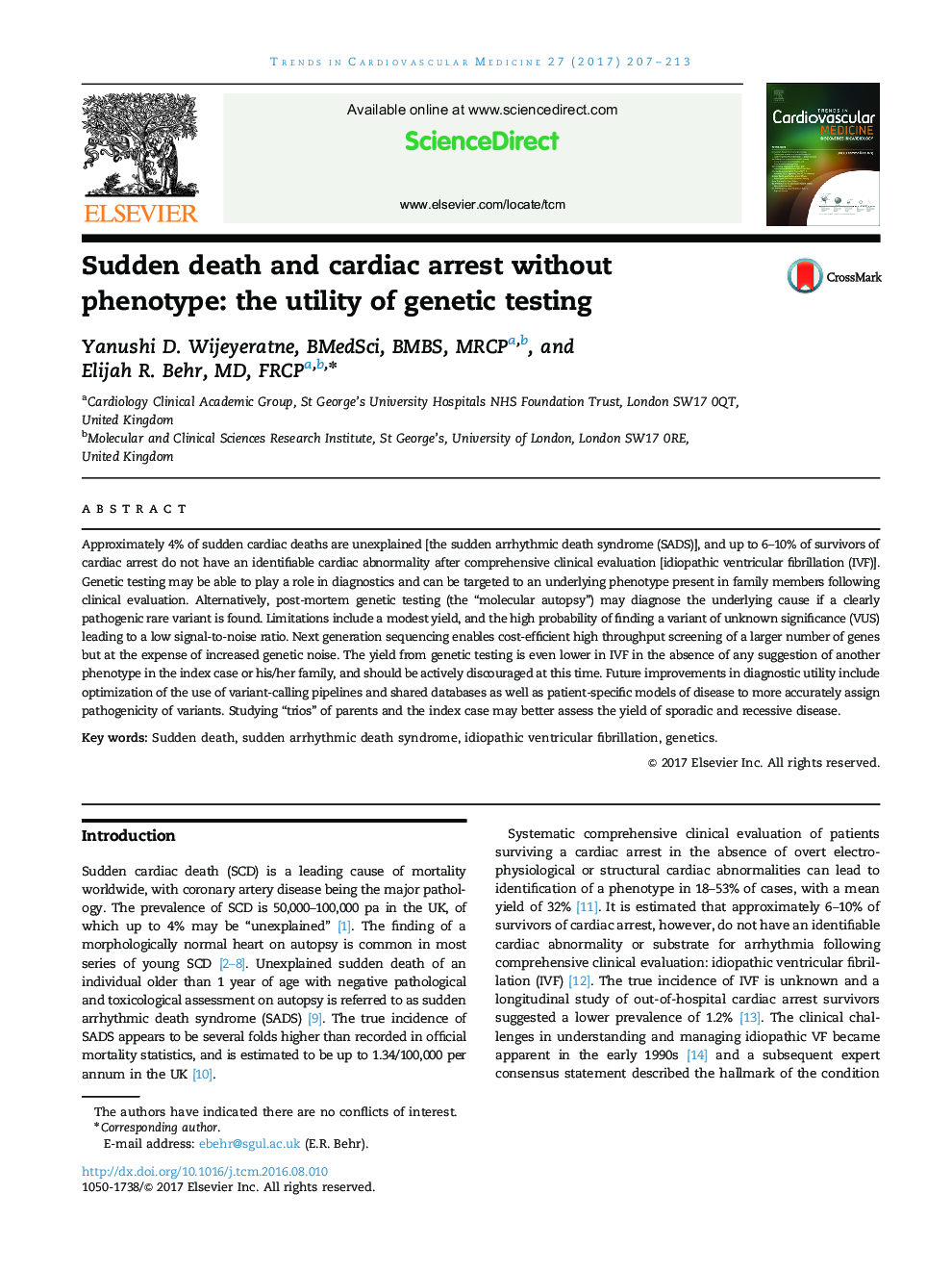| کد مقاله | کد نشریه | سال انتشار | مقاله انگلیسی | نسخه تمام متن |
|---|---|---|---|---|
| 5622368 | 1406174 | 2017 | 7 صفحه PDF | دانلود رایگان |
Approximately 4% of sudden cardiac deaths are unexplained [the sudden arrhythmic death syndrome (SADS)], and up to 6-10% of survivors of cardiac arrest do not have an identifiable cardiac abnormality after comprehensive clinical evaluation [idiopathic ventricular fibrillation (IVF)]. Genetic testing may be able to play a role in diagnostics and can be targeted to an underlying phenotype present in family members following clinical evaluation. Alternatively, post-mortem genetic testing (the “molecular autopsy”) may diagnose the underlying cause if a clearly pathogenic rare variant is found. Limitations include a modest yield, and the high probability of finding a variant of unknown significance (VUS) leading to a low signal-to-noise ratio. Next generation sequencing enables cost-efficient high throughput screening of a larger number of genes but at the expense of increased genetic noise. The yield from genetic testing is even lower in IVF in the absence of any suggestion of another phenotype in the index case or his/her family, and should be actively discouraged at this time. Future improvements in diagnostic utility include optimization of the use of variant-calling pipelines and shared databases as well as patient-specific models of disease to more accurately assign pathogenicity of variants. Studying “trios” of parents and the index case may better assess the yield of sporadic and recessive disease.
Journal: Trends in Cardiovascular Medicine - Volume 27, Issue 3, April 2017, Pages 207-213
